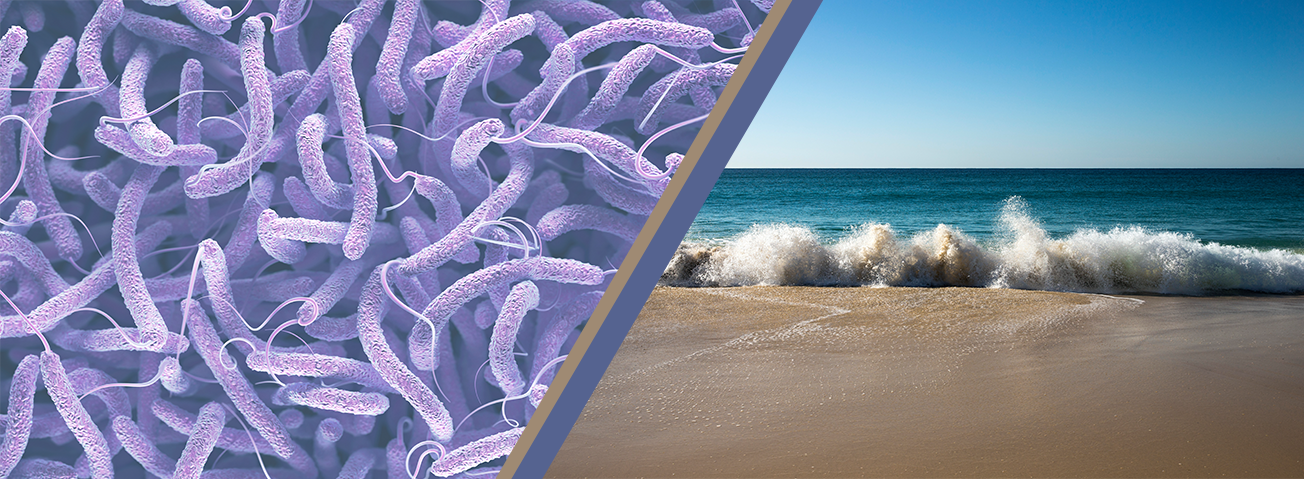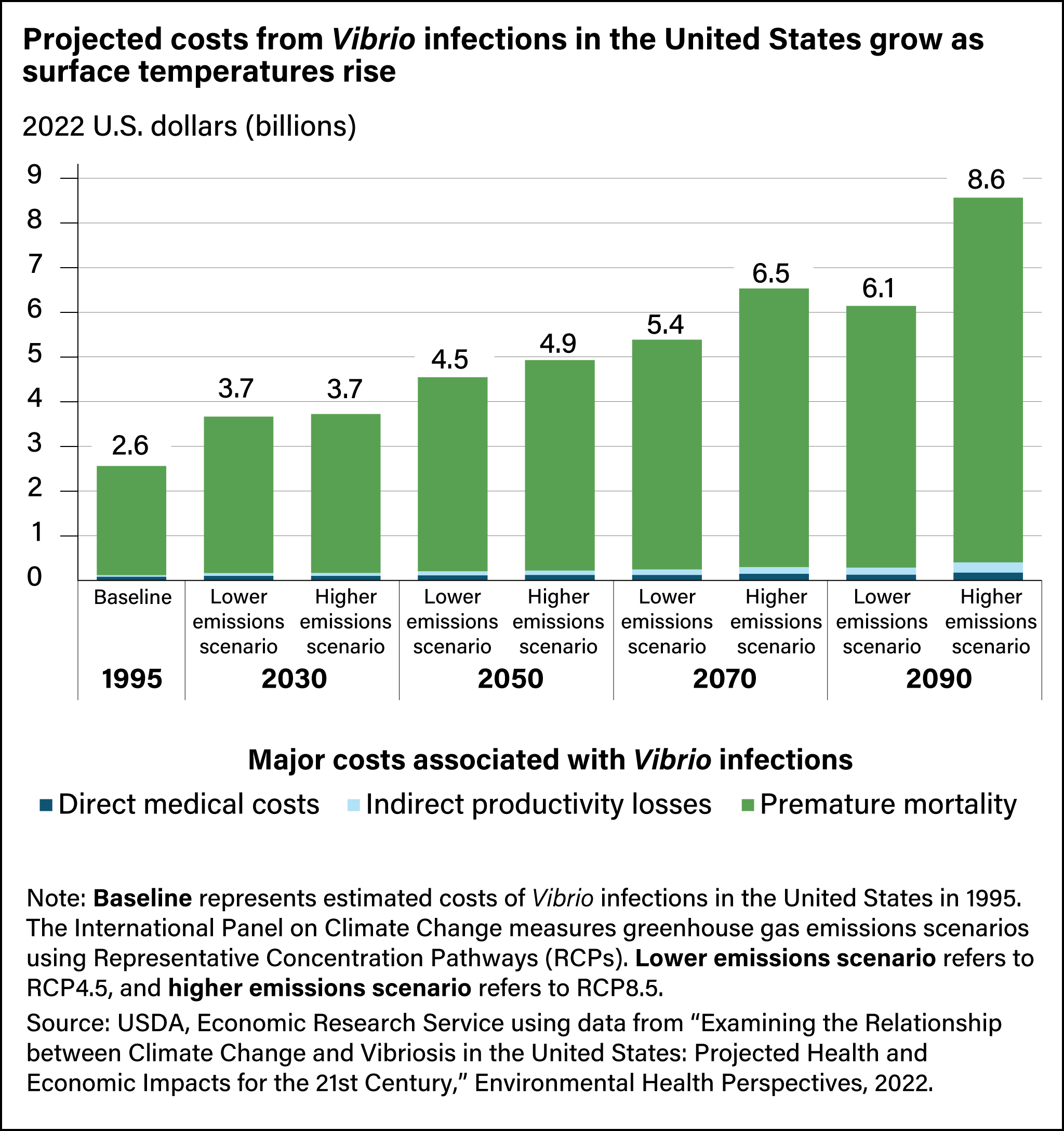
Climate Change Projected To Increase Costs of U.S. Vibrio Infections
- by Sandra Hoffmann, Megan Sheahan, Caitlin A. Gould and Michael Kolian
- 6/26/2023
Vibrio are bacteria that thrive in brackish and marine waters. In the United States, Vibrio are found in coastal areas and are most prevalent in the summer, when waters are warm. Many Vibrio species can cause human illness through foodborne and waterborne exposure. Foodborne exposure typically occurs from eating raw or undercooked seafood. Vibrio exposure may cause mild vomiting, diarrhea, swimmer’s ear, or skin infections. However, it can also result in rare but more serious outcomes like sepsis, amputations, and death.
Climate change is expected to expand the range and season of Vibrio infections as sea surface temperatures become warmer. There is evidence this already may be happening. In 2004, a Vibrio outbreak occurred in Alaska, more than 600 miles north of any previously recorded. Once rare in Oregon and Washington, infections now regularly occur there.
Researchers from USDA’s Economic Research Service (ERS), U.S. Environmental Protection Agency (EPA), and the private consulting firm Industrial Economics Inc. (IEc) recently used data on sea surface temperatures and non-cholera Vibrio infection surveillance data to project how much climate change could increase the incidence of these infections in the United States. ERS’ per-case cost estimates of foodborne illnesses were used to project the costs of additional illnesses, including:
- medical or treatment costs,
- productivity losses (the value of time affected by illness),
- and the value of premature deaths (an economic measure of the impact of deaths).
The International Panel on Climate Change has adopted a set of Representative Concentration Pathways (RCPs) for modeling the effects of climate change, including increased sea surface temperature. The measure RCP4.5 represents a moderate increase in greenhouse gas concentrations, and RCP8.5 denotes concentrations expected from unmitigated climate change.
Results show that U.S. cases of illness from non-cholera Vibrio infections may increase 50 percent by 2090 relative to 1995 because of higher sea surface temperatures associated with moderate increases in greenhouse gas concentrations and by more than 100 percent if global warming is not mitigated. Annual total cost of these illnesses more than doubles from nearly $2.6 billion in 1995 to $6.1 billion in 2090 (in 2022 dollars) under the lower emissions scenario (RCP4.5) and more than triples to nearly $8.6 billion under the higher emissions scenario (RCP8.5). Across both scenarios, about 95 percent of total costs are attributable to deaths caused by Vibrio infections.
Vibrio are only one type of pathogen whose impacts are likely to intensify in the 21st century because of climate change. This study is an example of how bio-economic modeling can provide information to decisionmakers about potential climate change impacts.
This article is drawn from:
- Sheahan, M., Gould, C., Neumann, J., Kinney, P., Hoffmann, S., Fant, C., Wang, X. & Kolian, M. (2022). Examining the relationship between climate change and vibriosis in the United States: projected health and economic impacts for the 21st century. . Environmental Health Perspectives. 130(8): 087007.
You may also like:
- Cost Estimates of Foodborne Illnesses. (n.d.). U.S. Department of Agriculture, Economic Research Service.
- Food Safety. (n.d.). U.S. Department of Agriculture, Economic Research Service.


